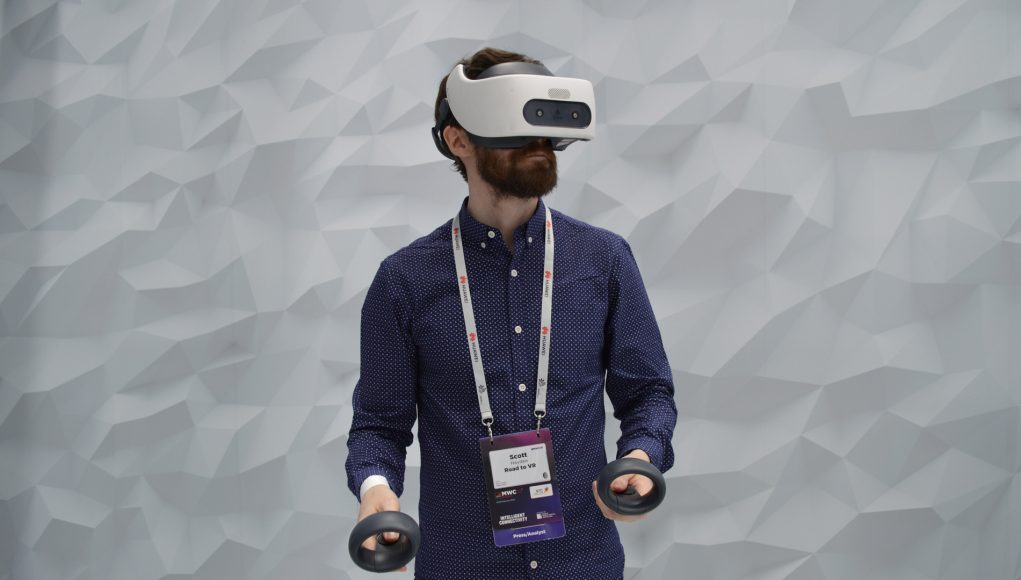Announced just last week, Vive Focus Plus is HTC’s next iteration of their standalone VR headset that adds a pretty big missing puzzle piece, namely a replacement for its predecessor’s single 3DOF controller (rotation only) for the new 6DOF controllers. But that’s not exactly all there is to Vive Focus Plus.
We’ve seen Vive Focus using 6DOF controllers a few times before the new version’s public debut at MWC 2019—it was only last month at CES that the company’s hardware partner Chirp Microsystems (now acquired by TDK) was still giving demos of the 6DOF controller dev kit in action, which included two controllers and an external snap-on faceplate studded with the little pinhole-size emitters and receivers for its ultrasonic controller tracking.
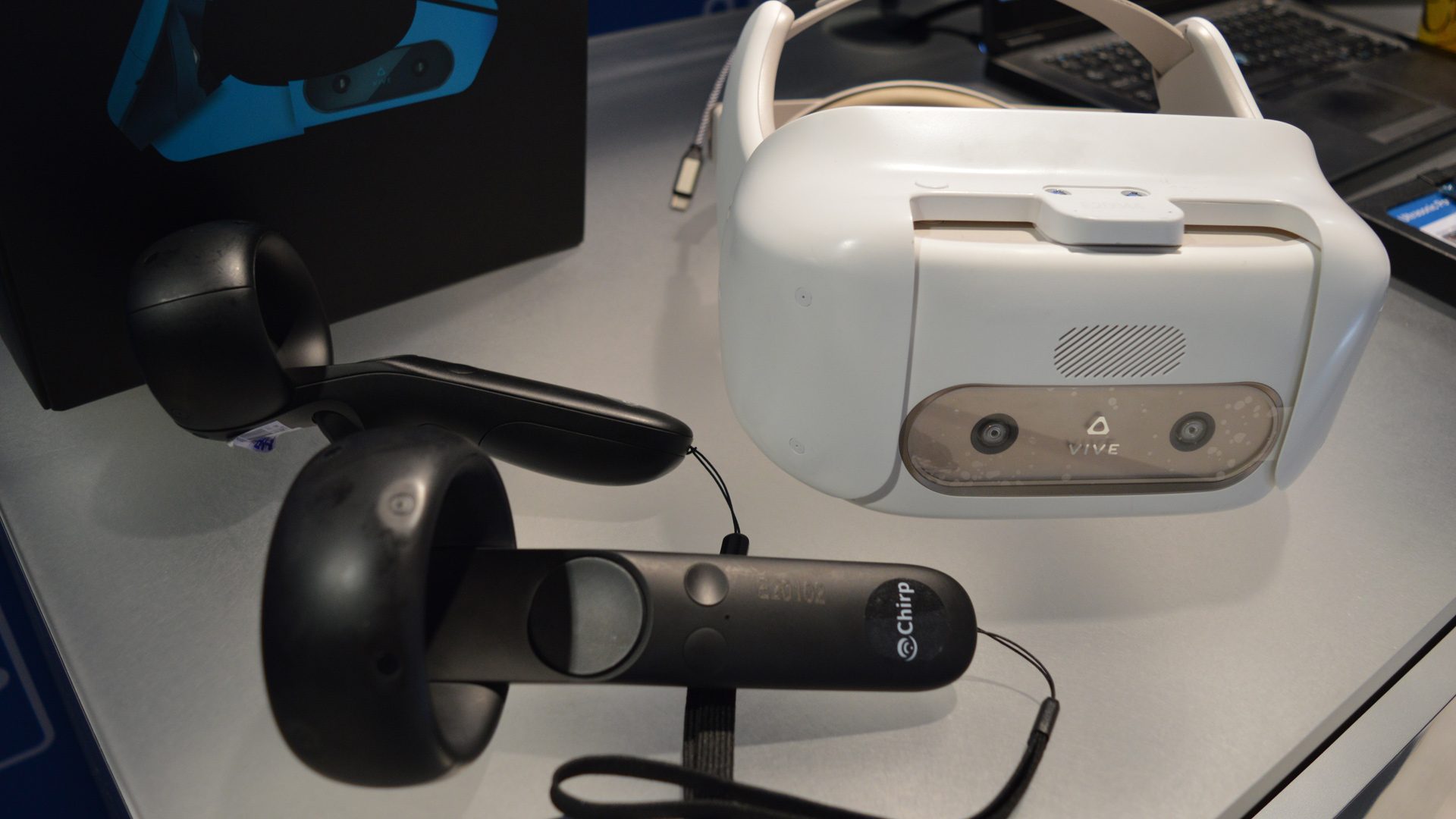
A few thing have changed about Vive Focus Plus from its predecessor—the new headset now boasts better comfort, a clearer image delivered by new lenses, and of course the 6DOF controllers—although not much else has changed from Focus to Focus Plus outside of that.
It still contains the same Qualcomm Snapdragon 835 SoC, the same dual 1,600 × 1,440 OLED displays, and the same optical headset tracking as before.
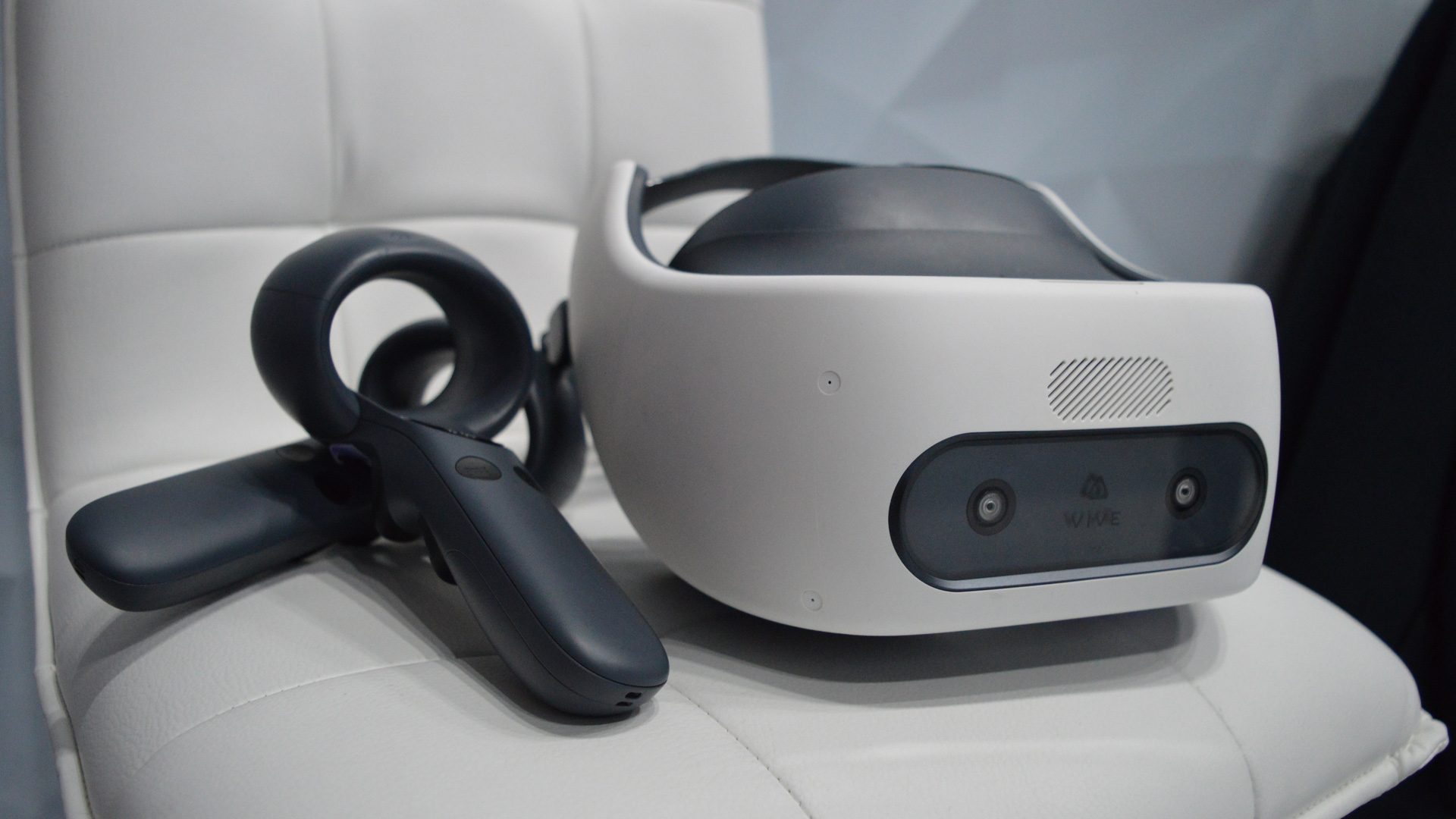
I’ll save you some time if you’ve been following along already by not rehashing the entire product; if not, check out our in-depth hands-on with the original Vive Focus from last year’s MWC to learn more about what fundamentally makes both of the headsets tick.
Now let’s dive into what’s new.
6DOF Controllers
Predictably the controllers handle nearly the same as Chirp’s, and we’ve written good and plenty about them over the past few months too. A quick refresher: it’s a pretty acceptable controller tracking implementation that offers ‘good enough’ latency and a wide enough tracking volume to keep the controllers spatially positioned even when they’re directly outside of the user’s field of view, meaning you won’t actually ever notice when your controllers go outside of their operational range (putting your hands behind your back, or behind your head).
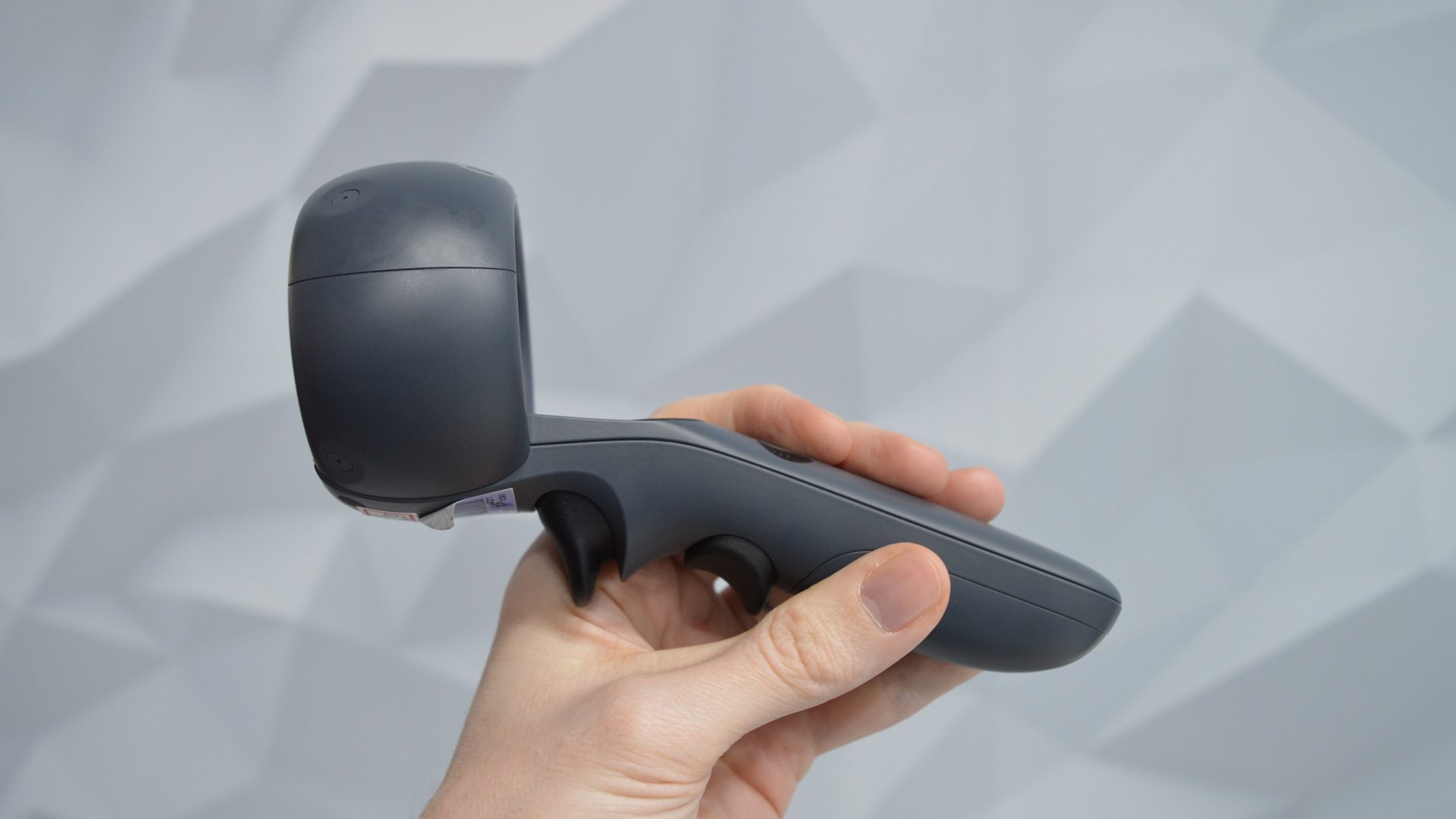
The headset and controllers send and receive ultrasonic sound in a frequency that it’s well out of the range of what even a dog can hear, so there’s seems to be little that can throw them off in terms of interference. I found the controller tracking to work as advertised even on the noisy expo floor.
That said, the final production controller isn’t the best design out there, but certainly not the worst. This mostly comes down to button layout and its ambidextrous design—both left and right controllers are interchangeable. While a bespoke left and right controller molded to each hand would invariably be a better fit, it’s decidedly much more natural-feeling than the wands that come with the other Vive varieties on offer.
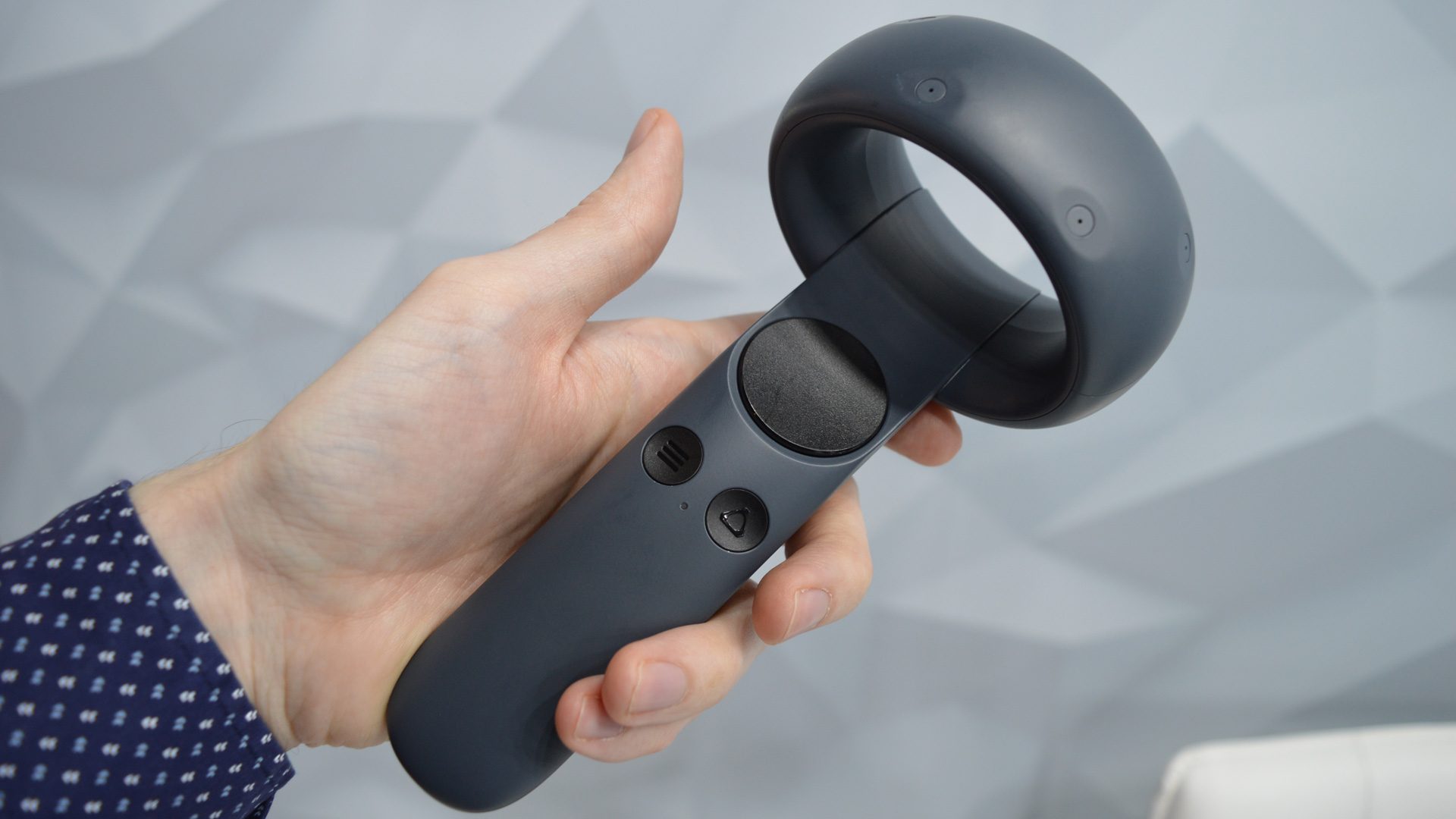
On the controller you’ll find a touchpad, an index finger trigger and a secondary grip button on the under side, and two awkwardly placed menu and home buttons that require you to adjust your grip to press.
In contrast to the dev kit, the new controllers offer only one new real hardware feature I could tell just by handling them; button and trigger presses offer an improved analogue feel. In short, the controllers get the job done and appear to do so without taxing the Snapdragon 835 too much.
Improved Ergonomics & New Lenses
The new headset makes one obvious change from the original Vive Focus in the ergonomics department, a larger forehead piece that provides better weight distribution. And while it’s not an unsubstantial change, I’d really need a much longer session than an expo floor demo to figure out just how much of an effect it has. That said, it did feel more comfortable than Vive Focus, something I last tried at CES in January.
Now that the ultrasonic controller tracking system is embedded in the headset itself, the new Focus Plus boasts an obvious benefit over the dev kit by delivering better balance, as the front-heavy tracking tech is offset internally.
The one change that is pretty significant is the new optics, which are remarkably clearer than the previous Vive Focus. While I wasn’t able to get confirmation on what specifically changed from Focus to Focus Plus, thankfully it’s fairly easy to see with the naked eye.

It appears the company has taken a few design cues from Samsung HMD Odyssey, which have a similar Fresnel ridge layout. All other Vive products, the original Vive Focus included, feature concentric Fresnel ridges that terminate at a much smaller circle in the middle of the lens. In Vive Focus Plus you can see the ridges dissipate much earlier before reaching the center.
Here’s a look at Samsung Odyssey for comparison:
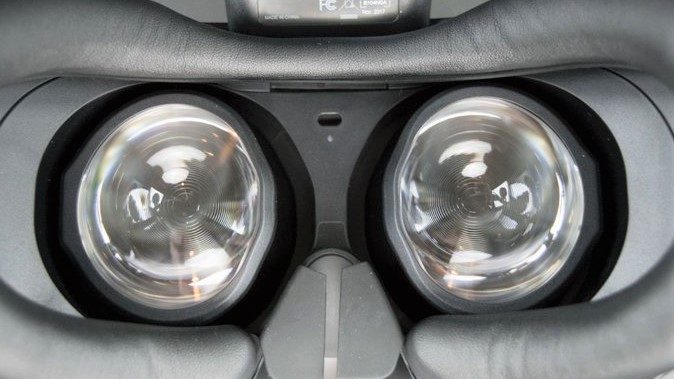
And now for the original Vive Focus.
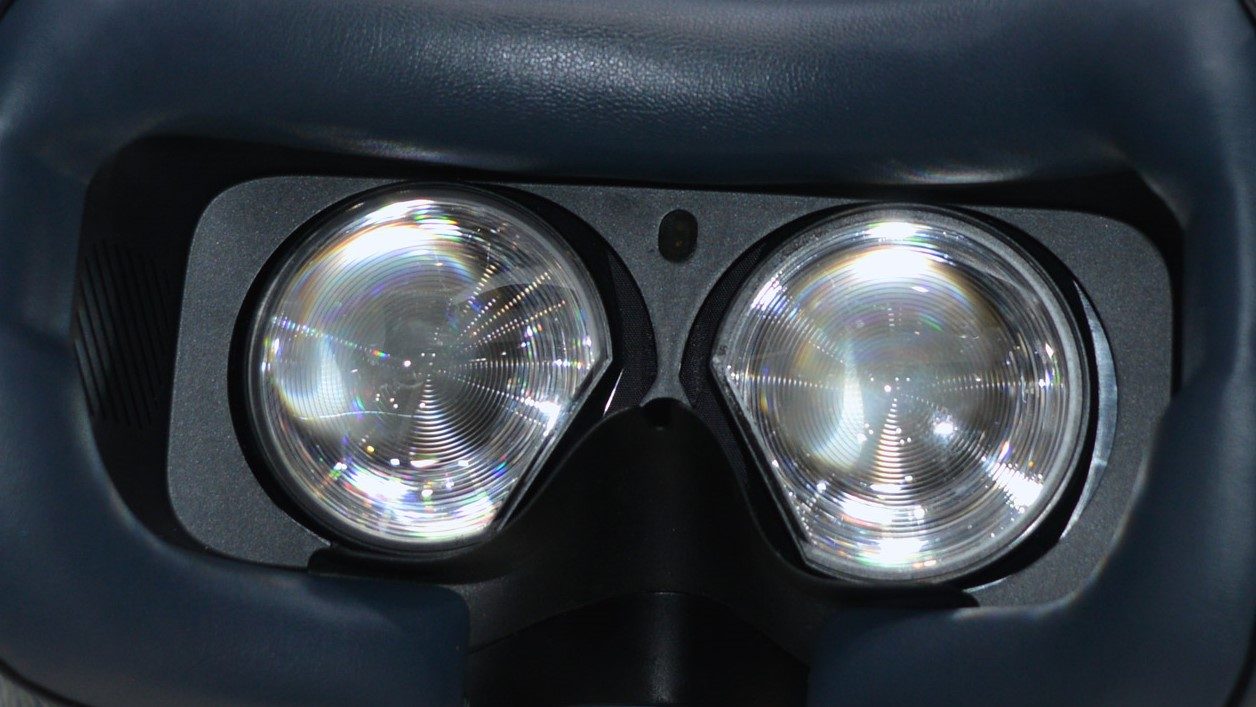
The upside to the new lens design is a reduced perception of an optical artifact unique to Fresnels known as ‘god rays’, or streams of light that appear to emanate from the center of the lens and jut outwards like wispy beams of light. The only app on display with high enough contrast to test this was the company’s conceptual 5G Hub cloud-rendering setup that streamed PC VR shooter Superhot VR (2017) to Vive Focus Plus. The reduction in god rays was notable, and I’m hoping HTC moves more towards this lens style in future products.

